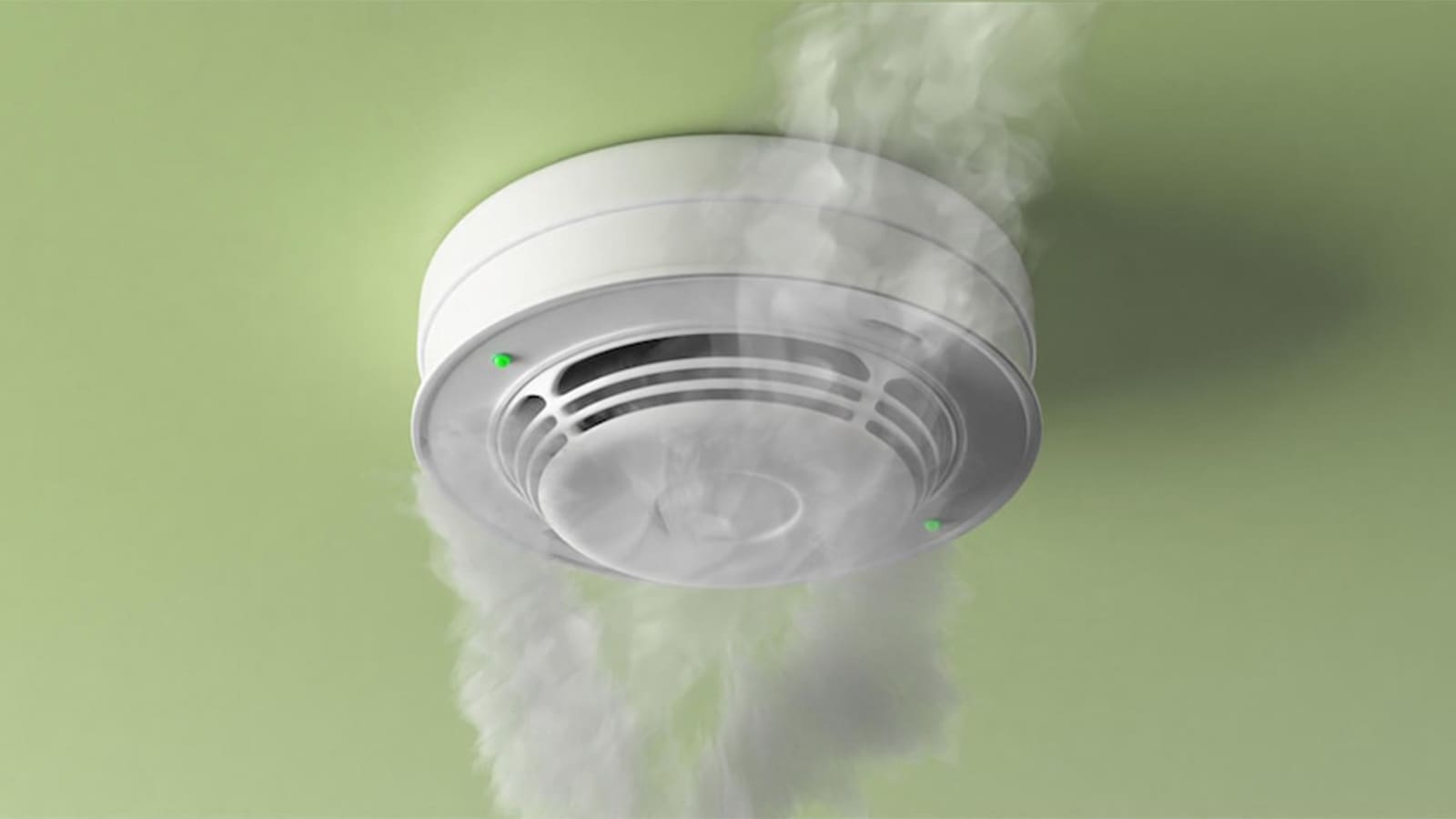Smoke Detector Installation And Maintenance: A Complete Guide
- Field Service Management
- 9 Min Read
A primary priority for you as a homeowner is the safety of your family, pets, and possessions. When you’re at home and away, smoke detectors are an essential safety measure that gives you some fire safety assurance.
With the change in the home furnishings used over time, fire research has shown that fires spread far more quickly now than in the old days. As a result, a sufficient number of smoke alarms in the appropriate locations are necessary to maximize the escape time.
Homes constructed to earlier standards must frequently meet the primary fire safety requirements. Recognizing that the need for detection has changed, property owners and enforcement agencies should take proactive measures to ensure every residence has sound smoke alarms.
Smoke detector installation is an utmost requirement of fire safety, and for best results, the smoke detectors must be installed and placed correctly.
We’ll discuss the steps for smoke detector installation in this article and their recommended locations.
Here What We Cover
What are the different types of Smoke Detectors?
The two primary smoke detector categories are, in general, ionization and photoelectric. Even while both are capable of detecting fire smoke, they are both better adapted to identifying a certain kind of fire. But smoke detectors can be better classified as battery-powered and hardwired.
Battery-powered Smoke Detectors
Smoke detectors that are powered by batteries are independent, self-contained devices. These detectors are frequently utilized in homes and other buildings to give possible fires an early warning.
Typically, alkaline or lithium batteries are changeable, power battery-powered smoke detectors. The batteries supply the electricity required to detect smoke particles and create an auditory alarm.
Best Field Service Management Software For Small Business
So, cost-effectiveness, good customer service, and customizability are three main factors every successful Small business owner should pay close attention to if they want to achieve long-term success within their industry. We have shortlisted five software for the same:

Use our free estimate template now
Make winning quotes in minutes—for any industry and any job.
Hardwired Smoke Detectors
Hardwired smoke detectors have extra benefits. They are wired into the rest of your home’s smoke alarms so that if one detects smoke, they all sound and draw power from your house’s electrical system. The chirping alarm that battery-powered devices emit as soon as they run out of power is not there, nor do you need to bother replenishing their batteries.
The drawback is that hardwired detectors won’t function after a power outage. Some versions can still operate despite a power surge because they feature a battery backup mechanism. Additionally, hardwired systems require more installation work than smoke detectors that run on batteries. They should connect to your home’s electrical system by your installer.
Smoke Detector Installation Steps
The two primary smoke detector categories are, in general, ionization and photoelectric. Even while both are capable of detecting fire smoke, they are both better adapted to identifying a certain kind of fire. But smoke detectors can be better classified as battery-powered and hardwired.
Pick the best smoke detector in the market
Invest in new detectors immediately if your current ones are older than ten years or if your home isn’t equipped with any.
Do some research on the various smoke sensor alarm types before you buy one. You can choose the detector that best suits your safety requirements, and pricing range from a range of brands, models, and price points.
Get detectors on every floor of your house.
The layout of your home will determine how many detectors you need, but at the very least, you should install one on each level, with one inside each bedroom and one outside each sleeping area. Remember to include the attic and basement as different levels when calculating the number of devices needed.
Smoke detectors that run on batteries are simple to install because they don’t need wiring. With the help of the adhesive pads or screws that come with the sensor, they can be fixed on walls or ceilings.
Battery-operated smoke alarms require regular maintenance. It comprises routine testing to ensure the alarm’s operation, typically accomplished by pressing the device’s test button. The detectors must also be free of dust and other particles that could hinder their performance.
Installing Hardwired Smoke Detectors can be complex, but here is the professional and easy process that you can follow:
Get posts like this in your inbox.
Keep learning how to run a 5-star business with our bi-weekly newsletter.
1. Decide on the smoke detector locations
At most 12 inches below the ceiling, smoke alarms should be mounted on the top. Use a stud finder to identify the wall or ceiling studs, and then position your smoke detector between the studs or joists rather than immediately over them. Mark your cutout by drawing a circle with a pencil around a new electrical box. Next, make the plasterboard aperture with a plasterboard saw.
2. Connect the Cable
Run an electrical line from a primary power source, such as an existing wall outlet, switch, or light fixture, to the position of the cable box. Most likely, a cable will need to be “fished” through the walls from the power supply to the connection box. If you’ve never fished line before, it can be challenging, so use the closest, most valuable power source to avoid feeling your wire too far.
3. Install the cable box after wiring it
The wire should reach inside the cable box by about 8 inches. After that, unwrap the cable’s outer coating using an electrician’s pliers. Fill the clamps within the box with the exposed wires. Once the cables have been firmly clamped inside the cable box, install the box inside the plasterboard hole and fasten it by putting the screws in the box. This will tighten the retaining tabs and pull the box into the gap in the plasterboard.
4. Fix the mounting plate and Connect the smoke alarm
The mounting plate that should have come with your new smoke detector should be attached once the cable box has been fixed. Just line up the plate with the cable box’s holes, tighten the plate to the box, and you’re done.
The smoke detector should connect to the electrical cable in the cable box once the mounting plate has been installed. A smoke detector’s black lead wire should be connected to the black circuit wire. After that, join the device’s white and white circuit wires.
The bare copper ground wire should then be connected to the device’s green insulated wire. Attach the gadget to the mounting plate after the cables have been secured.
In case your hardwired detectors have battery backups, you can use 9-volt batteries in the systems. Then twist your smoke alarm’s front onto the mounting plate, attach it, and ensure it fits tightly.
The NM wires must be attached to the breaker box; this is the only remaining task.
You can turn on the power to the circuit on your breaker box once your smoke detectors and the breaker panel are connected. Your alarm’s power light should be on if it has one.
Each alarm’s test button should be pressed. A loud siren should be audible. Turn off the electricity to the circuit on your breaker box if the alarm doesn’t go off, and check that all the connections are connected correctly. If the wiring is OK, the alarm is probably faulty and has to be replaced.
Maintenance of Smoke Detectors
Conduct Monthly Power Tests
It is better to manually test your detectors at least once a month, even if they can self-check.
Press the smoke detector test button to run a test, ensuring the sensor works and the alarm is played at the right volume. Take care while testing fire alarms if they are located in difficult-to-access regions of your home.
Annual battery replacement for non-hardwired detectors
Don’t wait until you discover dead batteries; set an annual battery replacement date on the first day of summer or Memorial Day. When changing the batteries in your smoke alarm, always adhere to the manufacturer’s instructions and do what they say.
Clean your detectors completely at least once a year.
Try to keep your detectors clean because dirt and pollutants might impair the performance of your fire alarms. Any external dust should be easily removed with an occasional light dusting, but you should also carry out more thorough cleanings once a year.
Summary
A homeowner’s responsibility includes being responsible for fire safety. Even though you’re hoping there won’t ever be a house fire, it’s a good idea to be ready just in case. Follow the guidelines above to make your home as secure as possible.
Managing Fire Protection and Fire Inspections is a challenging task. It requires effective and thorough services and regular equipment checks.
To streamline and optimize your operations, tools like ZenFire Software can help.

Explore a better way to grow your business. Book a free demo now!
Get organized, win jobs, and wow customers.
Book A Free Demo with ZenTrades Today!
Related Reading
Why Your Field Software Management Software Needs QuickBooks Integration
ZenTrades Why Your Field Service Management Software Needs QuickBooks Integration Read More Request Demo...
Read MoreZenTrades How To Manage Electrical Service Agreements Like...
Read MoreZenTrades The Best 5 Jobber Alternatives In 2023...
Read More

